UPF ART TRACK, a symbiosis of university and culture
UPF ART TRACK, a symbiosis of university and culture
Inaugurated on 17 May, to coincide with the celebration of International Museum Day the next day, the proposal was the brainchild of Javier Aparicio Maydeu, a professor of Spanish literature in the Department of Humanities at UPF and the rector’s delegate for culture. It took off in the context of the university’s 25th anniversary.
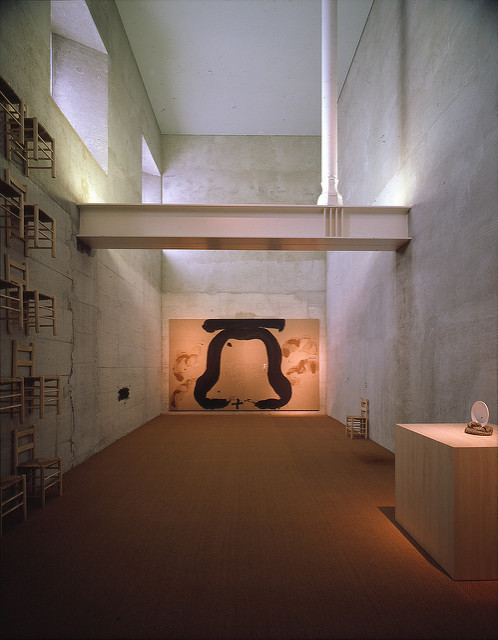 'This proto-museum, this new artistic initiative, is an invitation to citizens from around the world to come and discover that the university is open to society.’ With these powerful words, Jaume Casals, rector of UPF, described the ultimate goal of the launch of UPF Art Track, a tour of the Ciutadella campus intended to showcase the institution’s artistic heritage.
'This proto-museum, this new artistic initiative, is an invitation to citizens from around the world to come and discover that the university is open to society.’ With these powerful words, Jaume Casals, rector of UPF, described the ultimate goal of the launch of UPF Art Track, a tour of the Ciutadella campus intended to showcase the institution’s artistic heritage.
Inaugurated on 17 May, to coincide with the celebration of International Museum Day the next day, the proposal was the brainchild of Javier Aparicio Maydeu, a professor of Spanish literature in the Department of Humanities at UPF and the rector’s delegate for culture. It took off in the context of the university’s 25th anniversary. According to Aparicio, the initiative is intended to link ‘the university, culture and art, areas that are often presented as unrelated’. UPF Art Track ‘offers visitors a truly original experience, surrounded by academic life and bustling libraries’, he explained.
The project consists of an interdisciplinary art tour ‘that encourages introspection and rejects exhibitionism and which will grow as a result of the university and its visitors’, he said.
The seed for the proposal dates back to the very founding of the university and the idea of then rector Enric Argullol to associate it with quality architecture and art. This was achieved in part by recovering several emblematic spaces in the city, such as the Ciutadella military barracks, and by starting the collection of paintings that have illustrated the commemorative posters for each new academic year, such as that featured on the cover of this magazine.
Twenty-five years on, some of these spaces are now being reopened to the public and access is being provided to others, all with a view to ‘being a cultural institution in itself’, explained Casals, ‘and of achieving one of the most important goals of a modern university: not to become an impregnable fortress or unbreachable wall.’
A circuit showcasing multiple artistic and architectural gems
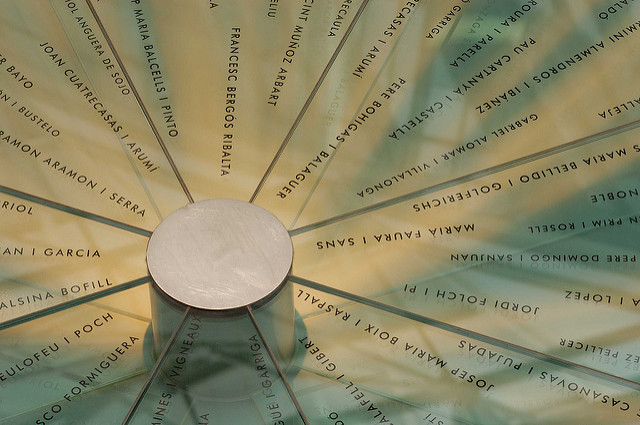 UPF Art Track offers people access to three of the university’s most prized artistic gems: Antoni Tàpies’s Reflection Room, the tour’s nerve centre and one of the world’s only secular chapels; the collection of contemporary art that various internationally acclaimed artists have donated to the university; and the Dipòsit de les Aigües building, which houses UPF’s General Library.
UPF Art Track offers people access to three of the university’s most prized artistic gems: Antoni Tàpies’s Reflection Room, the tour’s nerve centre and one of the world’s only secular chapels; the collection of contemporary art that various internationally acclaimed artists have donated to the university; and the Dipòsit de les Aigües building, which houses UPF’s General Library.
UPF Art Track is located on the Ciutadella campus. It begins in the Roger de Llúria building, an old military barrack that was renovated, in 2000, by the architects Josep Maria Martorell, Oriol Bohigas and David Mackay. A spectacular building with a built-up area of more than 5,000 m2, it has glass façades and a covered patio whose aluminium, glass and iron roof modulates the natural light.
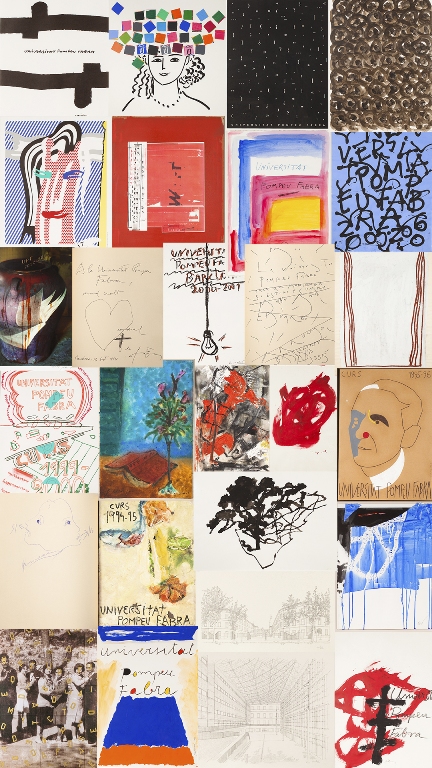 This space is home to the democratic memorial, which pays tribute to the nearly 120 professors, including Pompeu Fabra himself, who were separated from the Catalan university system at the start of General Franco’s dictatorship. Designed by the architects Josep Maria Martorell, Oriol Bohigas, David Mackay, Enric Satué and Josep Maria Civit, it consists of a circular glass box inscribed with the professors’ names, which are illuminated by a permanent beam of light that that moves in clockwise circles.
This space is home to the democratic memorial, which pays tribute to the nearly 120 professors, including Pompeu Fabra himself, who were separated from the Catalan university system at the start of General Franco’s dictatorship. Designed by the architects Josep Maria Martorell, Oriol Bohigas, David Mackay, Enric Satué and Josep Maria Civit, it consists of a circular glass box inscribed with the professors’ names, which are illuminated by a permanent beam of light that that moves in clockwise circles.
At the heart of the campus, following the route through the conserved vaulted ceilings of the former late 19th-century military building, visitors enter the Tàpies Space, the epicentre of UPF Art Track.
The first room, devoted to the artist Antoni Tàpies, features one of his most original works, a 1990 painting on canvas, and the back thereof, that wraps around the sides of the stretcher; it is also home to a representative painting by Antonio Saura, a portrait from 1993. Both works are part of the art collection the university has built through the commissioning of commemorative posters for each new academic year.
The most outstanding works in this collection of paintings that UPF began the year it was founded are displayed on a monitor, which has been placed on an easel to momentarily lend the space the air of a workshop.
The monitor shows works by some of the most prestigious contemporary Catalan and Spanish painters: Tàpies, Ràfols-Casamada, Guinovart, Perico Pastor, Miquel Barceló, Chillida, Saura, Soledad Sevilla, Perejaume, Frederic Amat and Susana Solano, amongst others.
Visitors then proceed to an intermediate space, where they can watch a video of Tàpies designing the Reflection Room. This gives way to the Reflection Room itself, conceived of by Tàpies as a sort of secular chapel, located in a cubic underground crypt measuring more than 500 m3 and made of concrete. The chamber is presided over by his three-by-five metre Diptych of the Bell (1991); an illuminated upright iron column rises from a steel girder that crosses the singular, extraordinary space, which is submerged in silence and symbolic intensity.
Pure Tàpies
‘There are few places in the world, at least in Europe, able to offer not only the work, the finished artistic product, but also a video of the creative process’, said Javier Aparicio Maydeu. Over five hours of film were edited to produce a fascinating nine-minute short showing Antoni Tàpies during the Reflection Room’s construction.
‘Tàpies speaking with visitors, engaging in dialogues with his own work, taking decisions, getting angry,’ he explained, ‘all against a noisy backdrop of drills, radial arm saws and electric screwdrivers. Tàpies painting, arranging his elements, considering the space itself and its intended purpose of encouraging introspection, rapture’. According to Carles Guerra, director of the Antoni Tàpies Foundation, ‘The work created at UPF is a space for meditation that eschews religious connotations in favour of human ones, inviting visitors to rediscover themselves.’
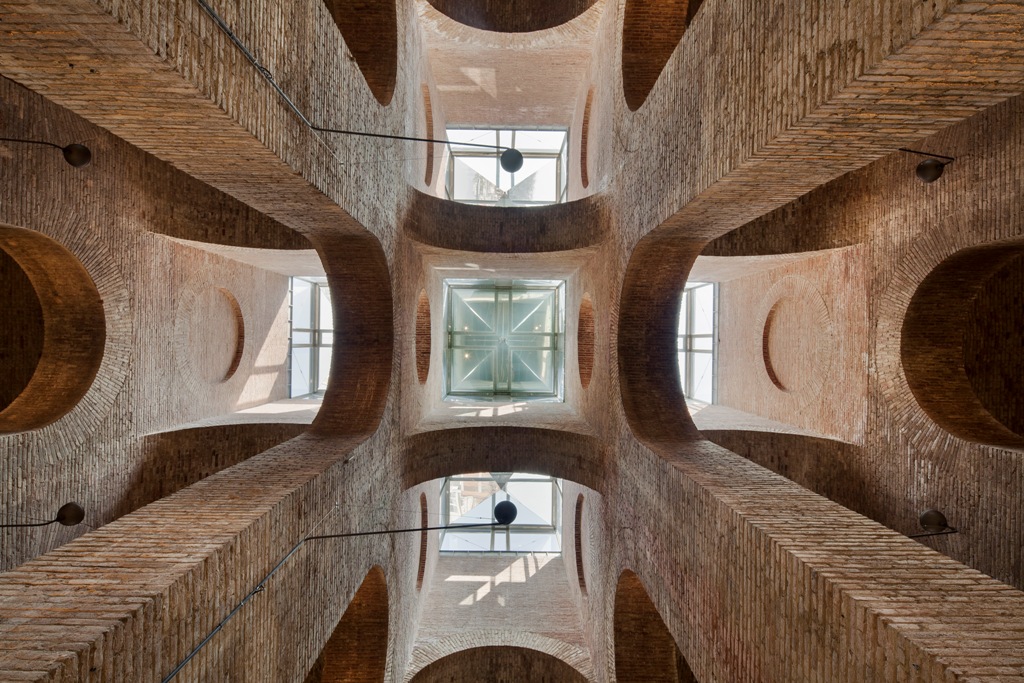 UPF Art Track ends at the stunning Dipòsit de les Aigües building, designed in 1874, at the height of Catalan modernism, by the master builder Josep Fontserè, manager of the entire area of the old military citadel. A then budding architecture student by the name of Antoni Gaudí performed the static calculations for the tank and support elements. The interior, a hypostyle hall, features 100 pillars that make up a maze of arches 14 metres high. The structure was most likely inspired by one of the most important Roman buildings in southern Italy, the Piscina Mirabilis in Naples, and, especially, by the Basilica Cistern in Istanbul commissioned by Emperor Justinian.
UPF Art Track ends at the stunning Dipòsit de les Aigües building, designed in 1874, at the height of Catalan modernism, by the master builder Josep Fontserè, manager of the entire area of the old military citadel. A then budding architecture student by the name of Antoni Gaudí performed the static calculations for the tank and support elements. The interior, a hypostyle hall, features 100 pillars that make up a maze of arches 14 metres high. The structure was most likely inspired by one of the most important Roman buildings in southern Italy, the Piscina Mirabilis in Naples, and, especially, by the Basilica Cistern in Istanbul commissioned by Emperor Justinian.
Finally, visitors can enjoy two exceptional outdoor sculptures. Cantata (2013), an installation by Susana Solano, pays tribute to the philosopher and UPF professor Eugenio Trias. The 20 metre band of stainless steel is die-cut in a way reminiscent of a frieze with the words of the sole Spanish Nietzsche laureate: ‘To write, to paint, to create or produce forms, masks: that is to live again and at a greater height…’. Meanwhile, Alfonso Alzamora’s sculpture The Ladder of Understanding (2016), donated by the Vila Casas Foundation, is the Barcelona-based artist’s special contribution to the Year of Ramon Llull, being celebrated this year.
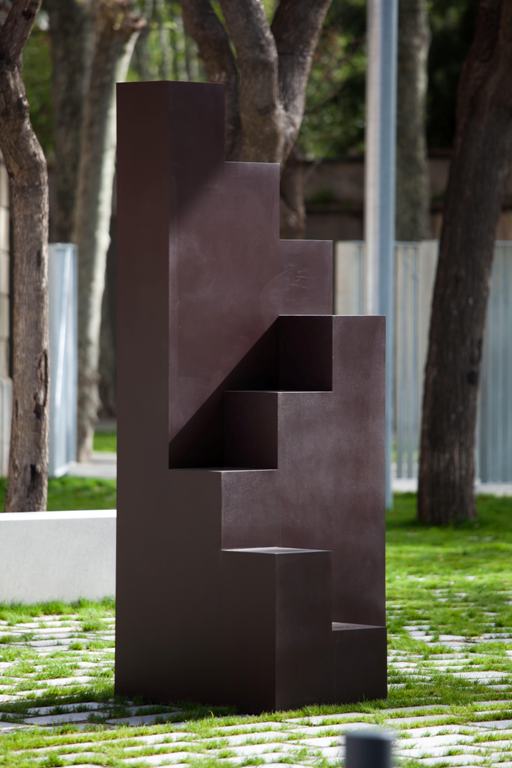 For now, guided tours are being offered on Wednesdays, at 11 am and 5 pm, and at other times by request, depending on availability. The aim, in future, is to expand the opening of the spaces as much as possible and to incorporate new works that enrich the circuit further.
For now, guided tours are being offered on Wednesdays, at 11 am and 5 pm, and at other times by request, depending on availability. The aim, in future, is to expand the opening of the spaces as much as possible and to incorporate new works that enrich the circuit further.
The guides are humanities students from the university who have specifically prepared for the occasion. Thus, the initiative is not only a window open to the world, but also a chance for future professionals in the sector to train and gain work experience in their field. Ona Anglada is one such student. According to Anglada, ‘Opening these spaces prevents UPF from sealing itself off from the public.’ Through her experience as a tour guide, she says she has also learned a lot from the visitors: ‘Men who had gone to the Ciutadella campus to pick up their rucksacks before beginning their military service, architects who know a lot about the buildings, people who ask you things you never thought about… They force you to do research to improve the tour.' Vignesh Tolu Melwani says that participating in the project has shown him that ‘you do not have to go far to interact with works by the most important artists; we study and go to class surrounded by a large number of them’.
UPF Art Track has the backing of the City of Barcelona, the Catalan Ministry of Culture, the Catalan National Council of Culture and the Arts, the Antoni Tàpies Foundation, and the company ESPON. It will also be part of the Barcelona Contemporary Art Circuit.
An all-star cast of patrons
The opening ceremony brought together the directors of six leading museums in Barcelona and Madrid, none of whom wanted to miss the premier of this singular proposal. They included Miguel Zugaza, director of the Prado Museum; Pepe Serra, director of the National Art Museum of Catalonia (MNAC); Rosa Maria Malet, director of the Joan Miró Foundation; Bernardo Laniado-Romero, director of the Picasso Museum; Vicenç Villatoro, director of the Barcelona Centre for Contemporary Culture (CCCB); and Xavier Antich and Carles Guerra, president of the board of trustees and director of the Antoni Tàpies Foundation, respectively.
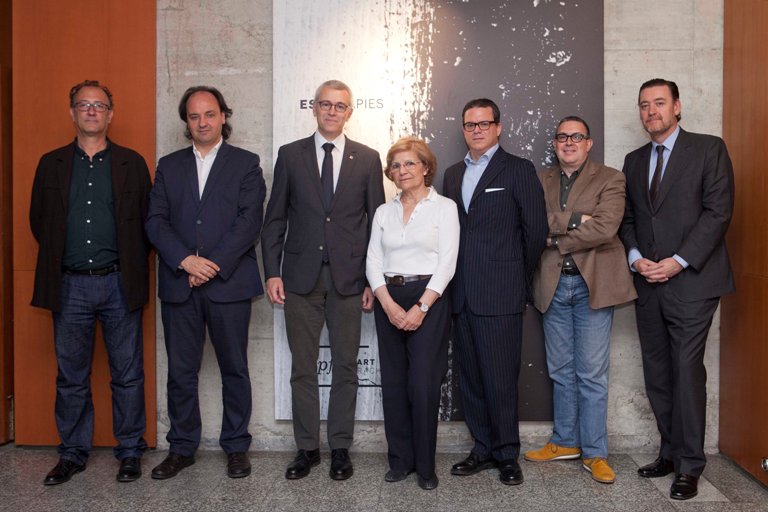
Their presence underscored the importance of the proposal for the city of Barcelona and for the world of culture and art in particular. After taking the tour, Miguel Zugaza said, ‘We are used to seeing art only at museums. UPF Art Track gives us the chance to see it in a different context.’ He stressed his admiration for the initiative, ending with a word of advice: ‘Do not ever turn into a museum. Therein lies the originality of this initiative: it is important to keep adding new pieces of value to the route within the context of the university.’
